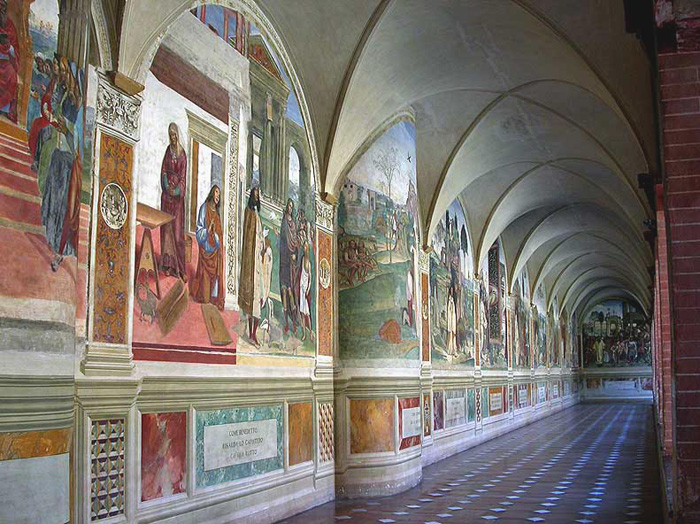 |
|
| E N I T | Il Sodoma, Ciclo di affreschi nel Chiostro Grande dell'Abbazia di Monte Oliveto Maggiore | La Storie di san Benedetto di Monte Oliveto Maggiore |
Il Sodoma (Giovanni Antonio Bazzi) Le storie di San Benedetto | Chiostro grande del monastero di Monte Oliveto Maggiore Life of St Benedict | The Great Cloister, Abbey of Monte Oliveto Maggiore |
The abbey of Monteoliveto Maggiore which stands atop a spur of the Crete Senese, the barren, rocky country southeast of Siena, is one of the most important and best preserved monastic complexes in southern Tuscany. It was founded by the prominent and well-to-do legal scholar Giovanni Tolomei (1272-1348), who resigned his post as podestà of Siena and renounced his worldly interests to take up the life of a hermit. He was joined by two other men from Siena, Ambrogio Piccolomini, and Patrizio Patrizi. The three built themselves shelters in this hostile landscape and over the years still others were attracted to the fledgling ascetic community. On March 26, 1319, the Bishop of Arezzo, Guido Tarlati, confirmed the congregation as a new religious order.
|
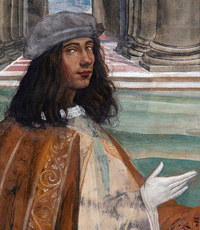 |
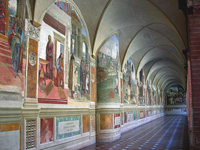 |
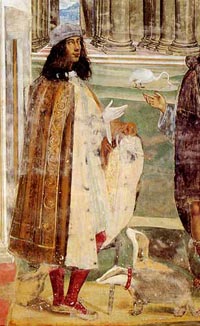 |
||
 |
 |
 |
||
 |
 |
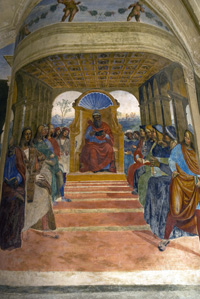 |
||
 |
 |
 |
||
 |
 |
 |
||
 |
 |
 |
||
 |
 |
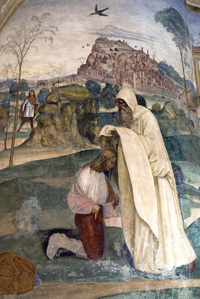 |
||
 |
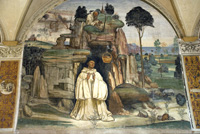 |
 |
||
 |
 |
|
||
| Il Cloistro Grande |
|
|||
 |
||||
 |
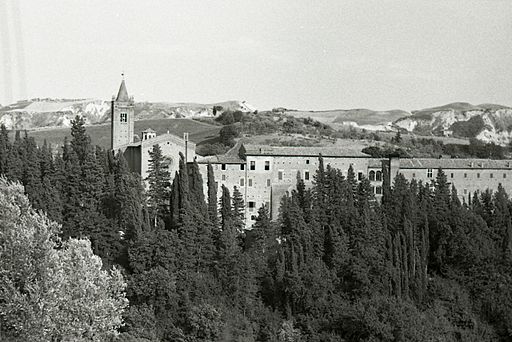 |
|||
Album Chiostro Grande Monastero di Monte Oliveto Maggiore
|
Album Monastero di Monte Oliveto Maggiore | |||
| Abbazia di Monte Oliveto Maggiore, Asciano | ||||
|
||||
|
||||
Ombra di luna in Maremma a @poderesantapia, nel centro della Maremma Toscana
|
||||
|
||||
|
||||
|
||||
| Da Wikimedia Commons, l'archivio di file multimediali liberi | Categoria Stories of Saint Benedict in Monte Oliveto Maggiore by Sodoma | ||||



